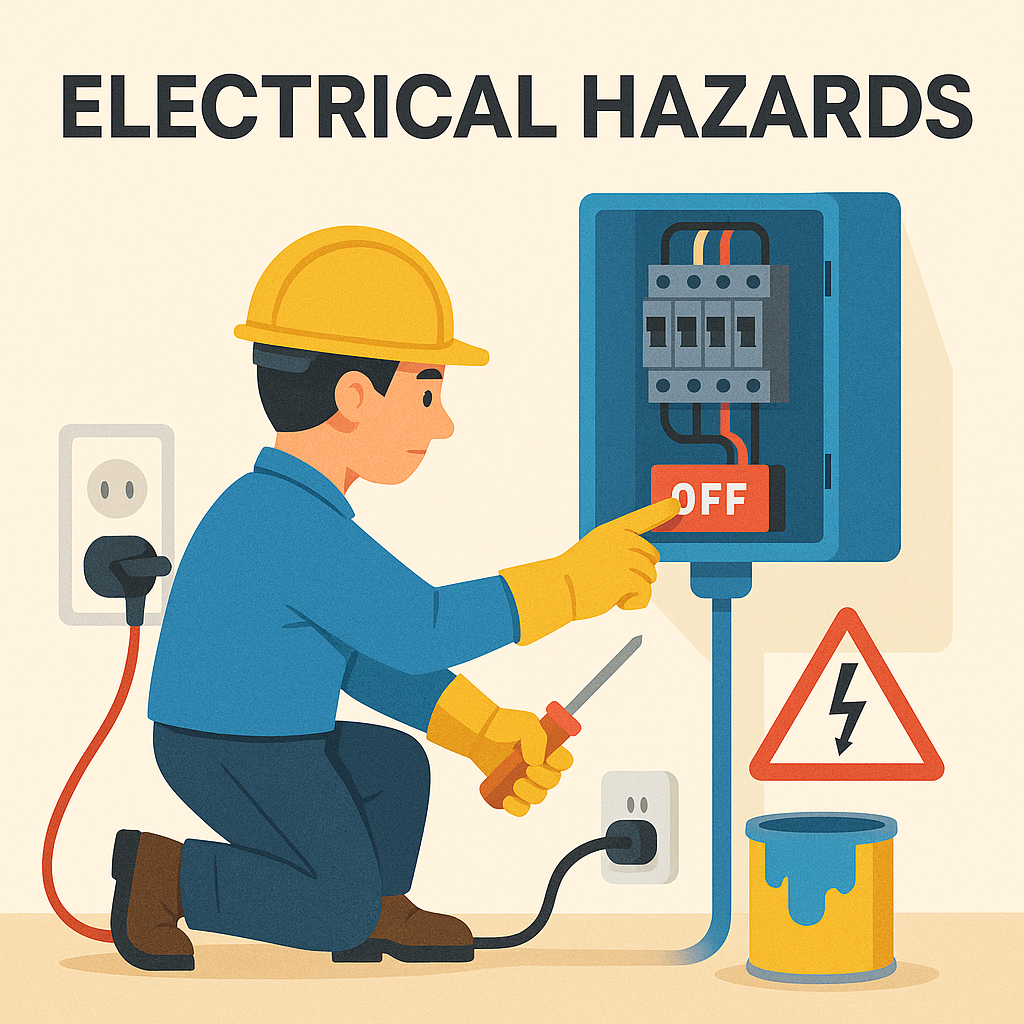Occupational Safety Tips for Home Improvement Projects should be a top priority, whether you’re painting a room, replacing flooring, or building a deck.
While DIY projects can be rewarding, they also expose you to various safety hazards—some of which can cause serious injuries.
By following proper safety protocols, you can ensure your project is both productive and accident-free.
- Why Occupational Safety Tips for Home Improvement Projects Matter
- Prepare Your Workspace Before Starting
- Personal Protective Equipment (PPE) is Non-Negotiable
- Use Tools and Equipment Safely
- Manage Electrical Hazards
- Prevent Trips, Slips, and Falls
- Be Mindful of Hazardous Substances
- Practice Fire Safety
- Child and Pet Safety
- Know When to Call a Professional
- Take Breaks and Hydrate
- Final Thoughts on Occupational Safety Tips for Home Improvement Projects
Why Occupational Safety Tips for Home Improvement Projects Matter
From slips, trips, and falls to power tool mishandling and chemical exposure, the risks during home improvements are real. According to the Canadian Centre for Occupational Health and Safety (CCOHS), many injuries that occur at home during renovation or maintenance activities mirror workplace incidents.

Whether you’re an experienced DIYer or a weekend renovator, applying workplace-level safety standards at home is a smart move. Here’s how.
Prepare Your Workspace Before Starting
A clean, well-organized workspace is your first line of defense against injury. Clear the area of tripping hazards, secure loose cables, and store tools and materials safely. Ensure good lighting and ventilation, especially in enclosed spaces or when using chemicals like paints or adhesives.
Tip: Use a checklist similar to a job hazard analysis (JHA) to evaluate risks before you begin. Internal resources like your employer’s safety templates can also be adapted for home use.
Personal Protective Equipment (PPE) is Non-Negotiable
Just as in any professional setting, PPE is vital for home projects. Depending on the task, consider using:
- Safety goggles to protect your eyes from dust, debris, and chemicals.
- Gloves to safeguard your hands during cutting, handling wood, or using chemicals.
- Hearing protection when operating loud tools like drills, saws, or lawn equipment.
- Respirators or dust masks if you’re sanding, spray painting, or dealing with mold.
Refer to standards like NIOSH-approved PPE when choosing safety gear.
Use Tools and Equipment Safely
Tools should always be in good working condition and used according to the manufacturer’s instructions. Many home injuries result from tool misuse or lack of maintenance.
Safety Tips:
- Never bypass safety guards on saws or grinders.
- Use ladders with caution—maintain three points of contact and place them on a stable surface.
- Unplug tools when changing bits or blades.
- Keep extension cords untangled and out of walkways.
For comprehensive tool safety, check resources like WorkSafeBC’s tool safety guides.
Manage Electrical Hazards
Electrical injuries can be fatal and often result from overconfidence or lack of knowledge. If you’re not trained to handle wiring, it’s best to hire a licensed electrician.

If doing minor work:
- Turn off the circuit at the breaker box before starting.
- Use insulated tools and wear rubber-soled shoes.
- Label any live wires and clearly mark areas under repair to alert others.
Never overload outlets, and avoid using power tools in wet conditions.
Prevent Trips, Slips, and Falls
Falls are one of the most common DIY hazards, especially when working on roofs, ladders, or stairs.
- Keep walking paths free of debris.
- Use non-slip mats or painter’s drop cloths that grip the floor.
- When working at height, consider a fall protection harness if the job requires it.
These fall prevention methods align with practices taught in workplace safety training programs like Working at Heights certification.
Be Mindful of Hazardous Substances
Many home projects involve chemicals—varnishes, paints, solvents—that can be hazardous. These substances may cause skin irritation, respiratory issues, or long-term health effects if mishandled.
- Read Safety Data Sheets (SDS) for all chemicals you plan to use.
- Store them in labeled containers away from children and pets.
- Dispose of them as per local hazardous waste regulations.
More guidance can be found through Health Canada’s chemical safety resources.
Practice Fire Safety
With power tools, flammable materials, and heat sources in play, the fire risk is elevated.
- Keep a fire extinguisher nearby and know how to use it (remember PASS: Pull, Aim, Squeeze, Sweep).
- Do not smoke or use open flames near combustible materials.
- Allow proper ventilation to avoid fume build-up from adhesives or paints.
This aligns with internal procedures often used in fire prevention plans.
Child and Pet Safety
Children and pets are naturally curious and unaware of hazards. Always create a “no entry” zone around your work area.

- Use gates or closed doors to limit access.
- Store tools out of reach.
- Never leave sharp or dangerous materials unattended.
Know When to Call a Professional
Some projects, like roofing, asbestos removal, or complex electrical work, are better left to certified professionals. The risk-to-reward ratio isn’t worth gambling with your health.
Hiring a qualified contractor is not only safer but may also comply with local building codes—an often-overlooked requirement in home renovations.
Take Breaks and Hydrate
Fatigue leads to poor decision-making, which increases your risk of accidents. Take breaks, especially when doing physically demanding tasks, and stay hydrated—just like you would on a professional job site.
Use ergonomically sound movements and stretch if working for prolonged periods.
Final Thoughts on Occupational Safety Tips for Home Improvement Projects
By following these Occupational Safety Tips for Home Improvement Projects, you’re bringing the same level of care and professionalism from the workplace into your home. It’s not just about getting the job done—it’s about getting it done safely.

From wearing the right PPE to handling tools and chemicals with care, a safety-first mindset ensures you can enjoy your hard work without unwanted injuries.
If you’re looking for more on home safety, check out OHSE.ca or Canada’s National Home Safety Association.

No comments yet